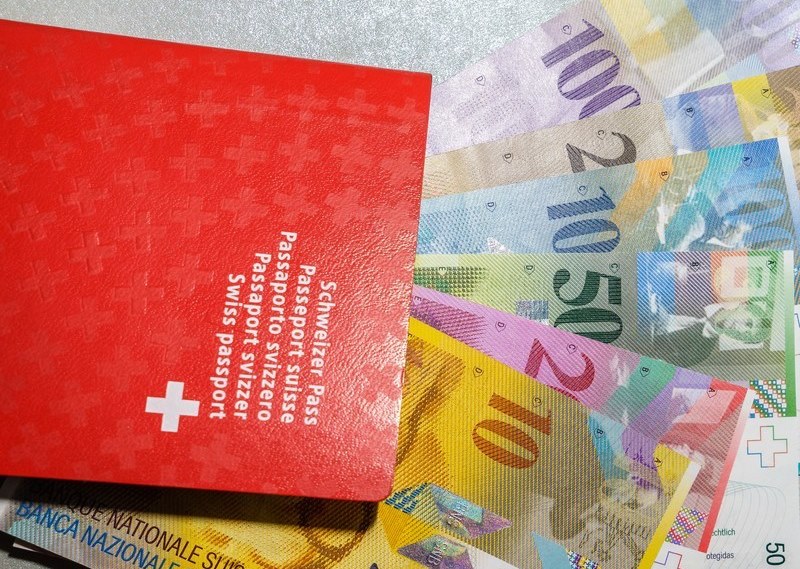It’s a fact that the financial environment since 2008 has been rife with volatility and fear and the global economic downturn has inevitably been good for gold, but we believe this is not the only reason behind the long term appreciation of gold. Currently, the nominal price of gold is three times higher than its level in 2000, but it is only +25% higher than its previous high, which was reached in January 1980 (at $835). This nominal price appreciation doesn’t reflect the real price of gold, which would definitely be lower if it were adjusted for inflation.
This factor puts in perspective the recent rise in the price of gold and opens the way for further appreciation.
Besides, the price does not represent the complexity of various gold related investments, products or trends any more. For a few years now, many new financial products based on the yellow metal have been developed which often offer easier access and are considered much more attractive, especially to investors who have mid-term objectives.
One must admit that when it comes to safe investments, people immediately think about physical assets, and gold or silver in particular. The reason for this is that physical assets have intrinsic value.
The value of a paper fiat currency or a stock can fall dramatically, but the value of a physical asset can almost never fall to zero. The intrinsic value of physical assets is the reason why they preserve wealth during times of financial crises.
But we should not lose sight of the fact that this kind of investment matches more long term objectives.
Moreover, the yellow metal retains historical value and usefulness, especially due to its role in global monetary stability over decades. That is certainly why “conventional explanations of supply and demand do not work” for gold, as stated in an article which appeared in October 2009 in The Economist. Switzerland has always been very sensitive to that argument and if the SNB is well known for being the last central bank in the world to abandon the Gold Standard system, it is also one of the central banks keeping the highest ratio of gold reserves.
When the financial crisis emerged a year ago, we predicted the present rise in gold and added that other precious metals, silver in particular, would follow and even outperform gold’s return. This proved to be perfectly correct since silver significantly outperformed gold.
Similarly, in March, we anticipated a sustainable rally into the second half of the year for precious metals which we now believe can accelerate through 2010 without any significant correction.
GLOBAL CHANGES The changes which occurred in the past few months, especially in China, are sending the market very interesting signals.
Global demand is growing as population rises. More energy is consumed, more food and metal resources need to be produced and transported in order to satisfy increasing consumer demands.
This trend may not be compatible in the long term with concentrated short futures and derivative positions, as is currently the case for several commodities.
Those on the inside - the gold producing mining companies - are undergoing a generational shift away from hedging.
All or most of these companies have seen the folly of capping gold and silver prices from this point forwards. The world’s largest producer – Barrick - has now discontinued its hedge book. There are an increasing number of exchanges.
Chicago, New York and London now have company with new precious metals competition in Dubai and Shanghai.
All the major exchanges were US-based prior to 2000. The Chinese, however, were operating a major exchange in Hong Kong in the early 20th Century.
They have liked gold all along, and today the Communist Party is promoting simple ownership of gold/silver as an alternative to A Share stocks.
CHINA'S NEW ROLE Much more than India, China’s role in the gold picture will also be a factor in the future. China is already the world’s largest gold producer and ranks third in silver production. It hopes to be the world’s largest silver producer, but it is already the largest refiner. The head of the State Administration of Foreign Exchange (SAFE), Hu Xiaolian, recently stated that the country's gold reserves had risen by 454 tonnes from 600 tonnes since 2003, which was the last time China adjusted its state gold reserves figure. The Chinese government has made it legal for its citizens to buy silver and Chinese banks are loaded with silver – they always have been.
The Chinese government is publicly advertising gold and silver as good investments and is now openly encouraging metal investment over stock speculation.
This is a major change in the demand scenario for the most important financial commodity from the world’s most populous country. Just a reminder; the Yuan is not backed by gold.
China needs to stockpile metals and energy goods since they are the world’s leading manufacturing centre.
The use of gold and silver in electronics has increased enormously in less than a decade. Without precious metals, mobile phones can’t be made. If there are shortages of metals – where producers have to compete with investors, corporations, and governments for these metals – then the price will certainly escalate to extreme levels. Increased demand will soon wake the world up from its complacent dreaming.
BEWARE OF GOLD AND SILVER EXCHANGE TRADED FUNDS The Commodity Exchange in New York (COMEX) has physical gold and silver inventory shortages and there have been big demands for physical delivery.
COMEX has begun a game changer lately– much to their disfavour. Inventories are not being diminished to satisfy investor requests. Rather than getting delivery in metal, delivery comes in the form of exchange traded funds (ETF) paper (for instance in gold (GLD) or silver (SLV) shares).
This is proof that these large ETFs are not entirely backed by metal and can be used to suppress the price of gold and silver. This can be done through leasing to key banks, at targeted times by liquidation sales and shorting at times where the “charts” point to breakouts, or when precious metal demand runs too far ahead of central banks’ desires to keep the image of inflation under control and the bond market in check.
By the way, if sponsors of precious metals don’t have as much metal as they say they do they will not be able to cash out all the shares. GLD and SLV always trade at a discount to net asset values (NAV), so don’t carry positions in paper ETFs where gold/silver backing can not be audited properly. Any position investors take in precious metals should be taken by way of investment in common shares of mining companies or in direct delivery of the metals themselves.
GOLD MINES BENEFIT LOCAL ECONOMY WITH RISING GOLD PRICES From an ethical point of view, large-scale gold production has been found to be a major factor in bolstering the economies of developing countries according to a report published last September by the World Gold Council (WGC) in partnership with the International Council on Mining & Metals (ICMM) and Oxford Policy Management. The report* considers the macroeconomic benefits of gold production in developing countries. It takes into account the well-debated resource curse theories, and examines evidence of actual contributions through an in-depth case study of Tanzania and the effects of gold mining on its economy over a 40-year period. Contrary to the critics’ views, the study showed that the two producers surveyed, Barrick and AngloGold Ashanti, are currently among the highest single taxpayers in Tanzania. In addition, export earnings from gold mining are already US$770 million, but are estimated to more than double by 2016. Job creation, although not typically among the greatest benefits of large-scale mining due to its capital-intensive nature, is in fact an important direct benefit of gold mining in Tanzania. The industry employs more people than all of the nation’s utility sectors combined, including gas, electricity and water works, with the resulting wages injected in to the Tanzanian economy becoming an equally important metric.
Generally, the current positive trend for precious metals will clearly benefit economies and workforces in producing countries.
A HISTORIC LOW RATIO FOR GOLD MINES Over the last 20 years, the long term gold price to Gold Mining Shares Index ratio has fluctuated between 2 and 6, with a high at 9 when the gold price spiked in 1990. The recent turmoil in equity markets has created a unique long term valuation opportunity for gold mines relative to the price of gold, as indicated by the current historically low reading for this ratio.
As the gold price resumed its long term uptrend, gold mining shares have started to generate fantastic returns.
We now believe the best way to participate in the gold run is clearly through diversified investments in international gold mines.
Our BBGI Share Gold Fund, registered on November 15th, 2006 as an open end mutual fund in Switzerland with daily liquidity, is an optimal way for investors to benefit from exposure to precious metal out-performance.
Gold shares and other related mining shares are poised to outperform physical metal in the year to come. The acceleration in prices was very positive for the BBGI Share Gold Fund, which was up +63% YTD in november 2009 and outperformed gold mines (+44%) and spot gold (+29%) performances. We remain extremely bullish on the prospects for precious metals and believe the bandwagon effect is just beginning.
BBGI Group Rue Sigismond Thalberg 2, 1201 Geneva – Switzerland Tel.: + 41 22 595 96 11 Fax: + 41 22 595 96 12 E-mail: info@bbgi.ch www.bbgi.ch * ‘The Golden Building Block: gold mining and the transformation of developing economies’, by Maureen Upton, Sustainability Advisor to World Gold Council
ALAIN FREYMOND AND MARJORIE THÉRY, BBGI GROUP













